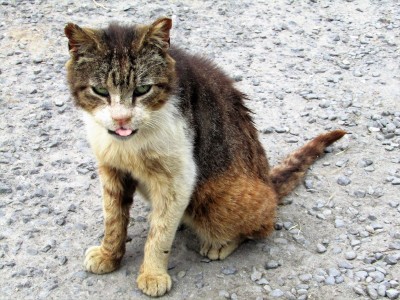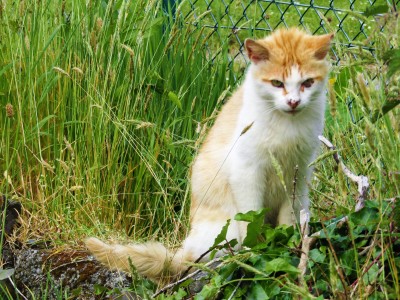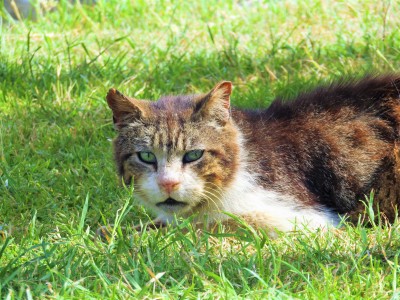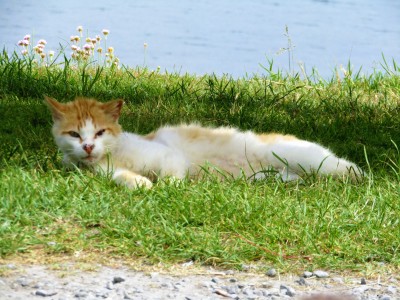Some good news.
Ice fisher has second thoughts about hunting after rescuing a moose.
When I was a kid, my mum gave me a book called “Animals Nobody Loves.” I could not put it down – and now, as a getting-older lady, I wish I had kept it. Checked my library app and could not find it (though I found a book with the same title and probably in the same vein, written by someone else). Lo and behold, Amazon has it, and I still remember that cover (see link above)! Well, the glories of Jeff Bezos.
Why do I mention it? Because two days ago in the New York Times I found this column, which in my view is near perfection.
Epic quote:
World, world, forgive our ignorance and our foolish fears. Absolve us of our anger and our error. In your boundless gift for renewal, disregard our undeserving. For no reason but the hope that one day we will know the beauty of unloved things, stoop to accept our unuttered thanks.
One of those columns where I say, “Man oh man, I wish I had written that!”
The Wondiwoi tree kangaroo is so rare and elusive that it disappeared for nearly a century and was assumed to be extinct. Now it has not only been spotted, but also photographed for the first time ever.
The unusual monkey-like kangaroo clambers through the trees of the montane forests of New Guinea. It had been seen there only once before by Western scientists, in 1928…
Now an amateur botanist from the U.K. has led an expedition into near-impenetrable bamboo forests 5,000 feet high in the remote Wondiwoi Mountains of West Papua, Indonesia, to find it.
“Just showing that it still exists is amazing. It’s such a remote and difficult spot to access that I was uncertain we would ever know,” says Eldridge, who was not involved in the expedition.
If you’re looking for a good cause, a good charity to which you can donate, look no further than the Aleppo Cat Man. He is really doing the work of the angels. Of course, any charity that matters to you is also an excellent option, but I have so admired the work done by this sanctuary in an impossible situation.
This poem is magnificent. Why did we have to read Lawrence’s novels at university, but not his poems? I could have lived without the former, but surely would have appreciated — even loved — the latter.
Mountain Lion
Climbing through the January snow, into the Lobo Canyon
Dark grow the spruce-trees, blue is the balsam, water sounds still unfrozen, and the trail is still evidentMen!
Two men!
Men! The only animal in the world to fear!They hesitate.
We hesitate.
They have a gun.
We have no gun.Then we all advance, to meet.
Two Mexicans, strangers, emerging our of the dark and
snow and inwardness of the Lobo valley.
What are they doing here on this vanishing trail?What is he carrying?
Something yellow.
A deer?Que’ tiene amigo?
Leon-He smiles foolishly as if he were caught doing wrong.
And we smile, foolishly, as if we didn’t know.
He is quite gentle and dark-faced.It is a mountain lion,
A long, long, slim cat, yellow like a lioness.
Dead.He trapped her this morning, he says, smiling foolishly.
Life up her face,
Her round, bright face, bright as frost.
Her round, fine-fashioned head, with two dead ears;
And stripes in the brilliant frost of her face, sharp, fine dark rays,
Dark, keen, fine rays in the brilliant frost of her face.
Beautiful dead eyes.Hermoso es!
They go out towards the open;
We go out into the gloom of Lobo.
And above the trees I found her lair,
A hole in the blood-orange brilliant rocks that stick up, a little cave.
And bones, and twigs, and a perilous ascent.So, she will never leap up that way again, with the yellow flash of a mountain lion’s long shoot!
And her bright striped frost-face will never watch any more, out of the shadow of the cave in the blood- orange rock,
Above the trees of the Lobo dark valley-mouth!Instead, I look out.
And out to the dim of the desert, like a dream, never real;
To the snow of the Sangre de Cristo Mountains, the ice of the mountains of Picoris,
And near across at the opposite steep of snow, green trees motionless standing in snow, like a Christmas toy.And I think in this empty world there was room for me and a mountain lion.
And I think in the world beyond, how easily we might spare a million or two humans
And never miss them.
Yet what a gap in the world, the missing white frost-face of that slim yellow mountain lion!
So many truly moving ceremonies this morning, in so many countries. I thought the service at the Arc de Triomphe was particularly lovely. I am from the generation that read The Guns of August in school, and while it is an excellent book, I think a much better book for anyone who wants to understand (in as much as one can) the origins of World War I is The Sleepwalkers.
I think this article is worth a read, though it is painful. It is about animals who die in war. I know my uncle wrote frequently about animals during his training period in the UK, and also fondly about the dogs “adopted” by his regiment. Please do continue to visit this website, where I am posting my uncle’s letters home from World War II (as well as his poems and family photographs and documents).
[Editor’s note: this story refers to the trip I wrote about at length here and also describes the events during which this photo was taken.- RA.]
The cats came running as soon as the ferry arrived at the pier. We followed our guide toward the Bank House, tiny Whiddy Island’s main – make that only – pub and hub, and two wild, furry little characters begged for pets and scritches. I was over the moon. I had been in Ireland a few days and hadn’t seen a cat yet. Sheep, cows, seals, eagles, chickens, horses, donkeys and dogs, yes. And yes, those beasties made this animal-lover happy, but cats are special. Because my name is Rondi and I am a cat lady.
When I lived in Istanbul I would have to factor in at least an extra half hour for my morning trek to work, to accommodate all the time spent stopping to cuddle local cats. At a kibbutz in Israel I took fish from the breakfast buffet and fed it to the feral colony outside. When I visit Paris, I make my way to Montmartre Cemetery to see the feral colony that sleep on Truffaut and Stendhal’s tombs. When I visit Rome, I hightail it to the Protestant Cemetery and commune with the cats who contemplate life at Keats’ grave and who nap on top of Gramsci’s eternal resting place.
Rome, of course, has plenty of feline activity, including the famous shelter which borders the Roman ruins near Torre Argentina. The great and glamorous Anna Magnani used to feed the cats in the area when she was performing at the Teatro Argentina, long before the creation of the current shelter.
One would assume that Magnani’s status as a ‘gattara’ – the Italian term for cat lady – would put to rest the lie that all cat ladies are dowdy old maids, but it is a stereotype that persists. A 1950s rom-com set in Rome features a scene that gives the stereotype cinematic life: in 1954’s Three Coins in the Fountain, Dorothy McGuire – in love with a seemingly oblivious Clifton Webb – is given a kitten by her maid, Louisa. “I am worried about you being alone, Signorina,” says Louisa, explaining that her sister is a spinster who talks to her many cats “from morning to night.”
Mamma mia!
Dorothy McGuire decides this will not be her fate. “It hasn’t come to that yet,” she says to the kitten. “You’re dear and small, but I’m not going to turn to you out of loneliness.”
I’ve never turned to a cat out of loneliness. I just find they are frequently better company than humans, and like Ernest Hemingway, I believe that one cat always leads to another. I’m not a spinster and I am (mostly) not dowdy, though I suspect I looked mighty dowdy during my recent trip to Ireland. I packed light as I can’t bear checking bags – too much lost luggage in my past – which meant my fellow travelers saw me in the same clothes more than they might have liked. It also meant that I neglected to bring my flat-iron. In other words, crazy-haired woman steps off the pier onto the soil of Whiddy Island and runs with delight into the paws of a couple of scruffy Irish cats.
And there began a tale. Travel they say, opens your mind to different peoples and cultures. It can and sometimes does, though I’ve often found it merely confirms what you already know. If it’s effective, it opens your mind to a bit of how you can be when you’re not at your best, to some of your less attractive traits. This is what happened to me on Whiddy Island.
Whiddy is a wee spot (5.6 kilometres long and 2.4 kilometres wide) off the coast of County Cork, Ireland. Ferries leave Bantry pier for Whiddy several times a day in summer months and less frequently the rest of the year. The island has a permanent human population of 22, many of whom speak Irish and an animal population of more than 22, each of whom may or may not speak Irish.
Two of the latter were those cats who came running. One was orange and white, the other a calico/tortoiseshell mix, so I knew she was a female. They were both old and thin, both highly affectionate and trusting, both desperate for every bit of contact the ferry full of tourists could give them. And both had dirty coats and ears that looked either frost-bitten or as if they had been torn during a street scrap. I wondered how much care they were getting. I don’t expect ferals, strays or even old cats to look as plump and happy as younger, indoor cats, but I was alarmed by their gritty coats and bony frames.
The more time I spent with the female – “the little old lady” was how I began to think of her — the more upset I got. She was having trouble walking, and her breathing sounded raspy. I know that rural life is different than urban life – for humans and non-human animals alike — but I was worried. I hoped my tone was caring, but in retrospect I think it far more likely to have been accusatory. Why, I asked our tour guide, aren’t they being fed? These cats are helping control the mouse and rat population; people should be grateful.
(Little Old Lady)

(Orange and White Lad)

What I didn’t mention was that I have worked for years for a cat rescue in Toronto and have seen cats in worse shape, as I had seen cats in worse shape in Istanbul. But the difference in both cases was that in Toronto and Istanbul, I could do something. I felt powerless in Ireland, and frustration compounded my concern.
As we continued our tour of the island, I kept wondering whether I could commandeer a boat and take the cats to the mainland for a veterinary visit. I couldn’t, and as we left, I saw the little old lady and her orange and white friend sitting in the tall grass, sunning themselves. I had to admit they looked contented. Still, our wonderful guide promised to do what she could to investigate, and if needed, help.
Back in Canada, I downloaded my photographs. Calmly looking at images allowed me to see what I had missed in the frenzy of activity on the island: both cats had tipped left ears, rather than what I had initially thought (though the calico had a ragged right ear, as well). Ear-tips are an international sign of TNR, or trap/neuter/return, indicating that feral and stray cats have been spayed or neutered. Relief flooded in, along with some embarrassment. I don’t think it was wrong of me to have been upset, or to have intervened. Too many ignore animal suffering. But I had ascribed negligence, or worse, where there was none. I had made assumptions without finding answers. Casting blame first is not helpful. Where there is doubt let me sow faith; where there is darkness, let me sow light, as the prayer of St. Francis – patron saint of the animals — says.
I found, through the wonders of the internets, the rescue group responsible for the area. I discovered that the Whiddy cats were fed by locals and given as much care as possible, considering the geographic limitations of island life. I struck up an online conversation with one of the rescue’s volunteers and learned that the little old lady was simply that – a very old lady no longer in the bloom of her youth.
A few days later a message from my tour guide – who had indeed reached out for help and information about the cats of Whiddy — brought sad news: my calico friend had died peacefully shortly after our visit. I’m grateful to have met her and to have learned from her. May she rest in peace and may she cuddle up for eternity on the lap of Anna Magnani.
(Little Old Lady Enjoying the Sun)

(Orange and White Lad in the Tall Grass)
